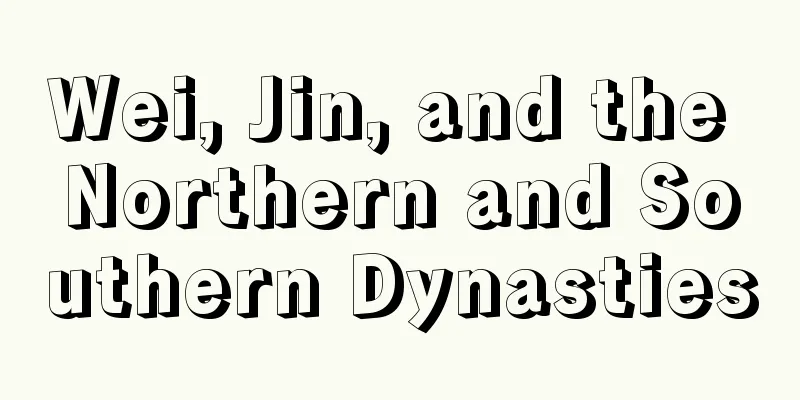Singapore - Singaporu (English spelling)

|
A country in southern Southeast Asia, consisting of Singapore Island and its associated islands at the southern tip of the Malay Peninsula. Its official name is the Republic of Singapore. Its area is 683 square kilometers, slightly larger than Awaji Island in Japan. Its population is 4.59 million (2007). In 1965, it seceded from the Federation of Malaysia and became independent. It was originally called Tumasik, but in the 12th century, a prince from Sumatra saw a lion (Singa) here and named it Singa Pura (Lion City). This was later pronounced in English and became Singapore. It occupies an important position controlling the world's transportation and strategic points such as the Straits of Malacca and Singapore. Since independence, it has experienced remarkable economic development, with a per capita gross national income (GNI) of $29,207 (2006), third in Asia after Qatar, Kuwait, and Japan. [Atsuhiko Bekki and Michiko Kayo] Nature and GeographyStructurally, Singapore Island is an extension of the Malay Peninsula, but is separated from the peninsula by the narrow Strait of Johor. The central and northern parts of the island are granite hills, with the highest point being Bukit Timah at just 177 meters. The southwestern part is also a complex of hills and valleys, but the eastern part is mostly lowland. The Singapore River, Jurong River, and Geylang River flow south, while the Kranji River and Serangoon River flow north and east, but all of them are small. Dense forests now remain only in the central hills, which are considered water source protection forests. The eastern part of the Strait of Johor is deep enough to house the Seletar naval port, but the western part is generally shallow. Coral reefs have also developed in the southern part facing the Singapore Strait. The climate is tropical rainforest type due to its closeness to the equator, with an average annual temperature of 27.4°C and an average annual precipitation of 2,087 mm, but as the rain falls evenly throughout the year there is no clear distinction between dry and rainy seasons. Most of the rainfall is in the form of squalls. The Singapore city area spreads across the southern part of the island. Its southern end is Faber Hill (105 meters), which holds Singapore's commercial port, Port Keppel, between the island and Sentosa Island offshore. The commercial center, Raffles Square, and the bustling Chinatown are also located near the southern coast. Orchard Road, which runs east to west, was once an upscale residential area for British people, but has since been transformed into an urban area with many hotels and the University of Singapore. The city area also extends northward, leading to high-rise housing complexes such as Toa Payoh Estate. Land development by reclaiming coastal lowlands is also active. Meanwhile, several reservoirs line the hills in the center of the island, forming a nature conservation area. The northern and eastern parts of the island, where rubber plantations once grew, are also developing with the opening of Changi International Airport and other facilities. The Jurong Industrial Estate was built in the southwest of the island, and a highway was also built to connect it to the city of Singapore. A long embankment about one kilometer long is built on the Johor Strait, and railways, roads, and waterworks are directly connected to Malaysia. Although the entire island has undergone a remarkable modern transformation, there are still areas covered with mangroves and other vegetation on the coast facing the western Strait of Johor. [Atsuhiko Bekki and Michiko Kayo] historyAccording to Malay history books, in the 12th century, a member of the royal family of Sumatra built the town of Singapura here, and it prospered commercially by controlling ships passing through the straits, but was destroyed by an expedition from the Majapahit Kingdom of Java at the end of the 14th century. It was then under the control of the Johor Emirate on the Malay Peninsula, but it fell into disrepair and was abandoned with almost no residents. In January 1819, British colonialist Stamford Raffles, who planned to expand into Southeast Asia, recognized the island's importance and purchased it from the Johor Emirate. He established his government office on the former site of the castle (Fort Canning Hill), divided the city into sections, and built residential areas for each ethnic group. This was the beginning of the history of modern Singapore. It officially became a British colony in 1824, and in 1826, along with Penang and Malacca, it became a Straits Settlements of British India. It was made a free trade port, and quickly grew into one of Southeast Asia's leading international cities, with a population of 20,000 by 1833. In 1867, Britain made it a direct colony of its own, and used it as a major military base for implementing its Asian policy. However, the majority of the population was of overseas Chinese descent. During World War II, it was occupied by Japanese forces in February 1942, and was renamed Shonan City. After World War II, Singapore gained autonomy from Britain due to the rise of nationalism, and in 1963 it achieved independence by forming the Federation of Malaysia with Malaysia. However, the Chinese residents, who made up the majority of the population, did not want to be led by the Malay residents, and Indonesia was also opposed to the formation of the Federation of Malaysia, so Singapore separated and became independent in 1965, forming the Republic of Singapore. The withdrawal of British troops from Singapore was completed by the end of 1971, and Singapore itself took on the burden of national defense. [Atsuhiko Bekki and Michiko Kayo] PoliticsThe government is a republic with a president as head of state. 75% of the total population is of Chinese descent, but taking into consideration the fact that the country was originally Malay land, the president was chosen from among non-Chinese people (the first president was of Malay descent). The term of office is six years. However, the real power in the country's politics is held by ethnic Chinese. The parliament is unicameral with 84 seats and a term of office of five years. The People's Action Party (PAP), led by Lee Kuan Yew (Senior Minister since 1990, Cabinet Advisor since 2004), who served as prime minister for a total of 31 years since independence, monopolizes almost all the seats and has a strong dictatorial tendency. In the 2006 general election, the PAP won 82 seats, the Democratic Alliance 1, and the Workers' Party 1. Goh Chok Tong succeeded Lee Kuan Yew as prime minister for 14 years, and Lee Hsien Loong has been prime minister since 2004. Although it is a small country, it has a complete administrative organization, with a cabinet consisting of 13 ministries, and has increased efficiency through simplification. The country also makes efforts in national defense, has a conscription system (two-year military service obligation), and has a military strength of 50,000 in the army, 9,000 in the navy, and 13,500 in the air force. The domestic political situation is stable. Diplomatically, China has a basic policy of non-alignment and neutrality, and strives to maintain friendly relations with as many countries as possible. China responds promptly to international situations, dealing with them in a multifaceted and realistic manner, but as the situation in Southeast Asia develops, China is working to strengthen the Association of Southeast Asian Nations (ASEAN). China is at a higher stage of development than other ASEAN countries, and despite the many differences in its position, it has adopted a policy of cooperation with the other nine countries. As China is essentially a Chinese nation, there are strong voices within ASEAN countries wary of it becoming a "Third China." [Atsuhiko Bekki and Michiko Kayo] Economy and IndustrySingapore had long prospered as a free port through transit trade, but after the Second World War, transit trade slumped as neighboring countries became more independent. For this reason, an industrialization policy was implemented with foreign capital as the core, focusing on heavy chemical industry, and the country made a major shift in national policy to become an industrial nation. This was successful, and the country's gross domestic product (GDP) grew by an average of 14% between 1968 and 1973. Currently, the unemployment rate is 2.1% (2007), and the country has achieved nearly full employment. The gross domestic product (GDP) is $152,029 million (2007), and the per capita GDP is $35,163 (2007), making Singapore the second largest industrial nation in Asia after Japan. Industries range from food and clothing to shipbuilding, petroleum, and electronic machinery. The center of the country is the Jurong Industrial Estate, built in the southwest, which had about 6,500 factories and 333,099 employees in 1994, and the construction of Jurong New Town was also carried out at the same time. The government's intention is to avoid competing with other developing countries in labor-intensive sectors, given the country's small population, and to shift to capital-intensive or technology-intensive industries such as oil rigs and engineering, and for this reason it has adopted a high-wage policy and streamlined labor-intensive industries.Other activities include intensive cultivation of vegetables for domestic consumption and fishing in surrounding waters, but these are small in scale and the country is dependent on imports. Exports consist of industrial products resulting from the progress of industrialization and traditional transit trade of rubber, lumber, etc., totaling 229,003 million dollars. Imports, which are mostly machinery, mineral fuels, and chemical products, total 262,743 million dollars (2007). Although there appears to be a trade deficit, there is a large non-trade income from finance, shipping, tourism, etc., and the capital account is in a large surplus due to the inflow of foreign capital, so the overall balance is in surplus. Malaysia accounts for 13% of total trade, followed by the United States with 11%, China with 11%, Indonesia with 8%, and Japan (2006). In addition to free trade negotiations promoted by the World Trade Organization (WTO), Singapore is also active in bilateral free trade agreements (FTAs), and has signed agreements with Japan, the United States, Australia, South Korea, India, the European Free Trade Association (EFTA), ASEAN countries, China, and other countries, promoting them on a global scale. Singapore is also known as the base for the Asian dollar, and as the country's economy developed, it grew into an international financial market third only to New York, London, and Tokyo. In 1996, the British bank Bankers Trust transferred its foreign exchange operations from its Tokyo branch to its Singapore branch, enhancing Singapore's status as an international financial center. The Port of Singapore remains a major maritime hub, and Changi International Airport handles approximately 33.37 million international passengers annually (2006). There is an international railway that crosses the island and connects to mainland Malaysia. The bus network is well developed, with the number of passenger cars reaching 498,000 (2006). [Atsuhiko Bekki and Michiko Kayo] Society and CultureChinese make up 75% of the population, followed by Malays at 14%, Indians at 9% and others at 2%, giving the country a complex social structure (2008). Malay is the national language, and in consideration of historical circumstances, four languages are recognized as official languages: Malay, Chinese, Tamil and English, although English is used for "administrative language." The number of British people has declined significantly, but in recent years, there has been a remarkable influx of Americans and Japanese people. The government has begun redeveloping the densely populated old city area, building several high-rise housing estates, and more than 30% of the total population has already moved into these inexpensive estates. However, despite the country's economic development, there are still differences in living standards between ethnic groups, and there is great dissatisfaction among Malays and Indians living in "rural" (kampung) areas. The government has also made great efforts in the area of welfare, keeping inflation low, improving medical facilities, and imposing various strict regulations (such as banning long hair for young people and littering cigarette butts), creating a clean society worthy of the nickname "Mr. Clean in Asia." The education system consists of six years of primary school, four to five years of junior high school, one to three years of high school, and three years of university. Although only six years of primary school are compulsory, the spread of education has been remarkable. From the first year of primary school, bilingual education is provided, learning English and another language (either Chinese, Tamil, or Malay). However, in recent years, there has been a tendency to overemphasize English and neglect one's own language, and measures to address this are becoming a new issue. As for universities, the University of Singapore has long been famous, and after the war, Nanyang University was created for Chinese students, but it has now been merged to become the National University of Singapore. There are also Nanyang Technological University and Singapore Management University. Religion varies depending on the ethnic group, and various religions such as Buddhism, Islam, and Hinduism are practiced. Major daily newspapers include the English-language Straits Times and the Chinese-language United Newspaper. Television broadcasts are available in four languages: Malay, Chinese, Tamil, and English. The state-run SBC Broadcasting was privatized in 1994. As of 2003, about 99% of households had a television, the highest rate in Southeast Asia, and the number of mobile phone subscriptions is also among the highest in Asia, at 126.7 per 100 people. [Atsuhiko Bekki and Michiko Kayo] Relations with JapanAfter the Second World War, Singapore modeled its own economic growth on Japan's, and relations with Japan rapidly became closer. Japan is also Singapore's fifth largest trading partner, with imports from Japan totaling 2.566 trillion yen in semiconductors and other electronic parts, machinery and equipment, steel, and textiles, while exports to Japan totaling 829 billion yen (2007) in petroleum products, machinery and equipment, etc. Japan has a chronic trade surplus with Singapore. Japan's support for Singapore's economic growth, including investment in the Jurong Industrial Estate, grant aid, and assistance with training engineers, played a major role. In the 1990s, Singapore grew into a donor country, and Japan's Official Development Assistance (ODA) continued until 1972 (loan aid), 1987 (grant aid), and 1998 (technical cooperation), but has since been discontinued. A well-equipped Japanese school was also opened for the children of the 26,370 Japanese residents in Singapore (2006). The number of tourists visiting from Japan also exceeded one million per year in the late 1990s, but fell sharply to below 500,000 in 2002 and 2003 due to the effects of the Severe Acute Respiratory Syndrome (SARS) epidemic, the outbreak of avian influenza, and the economic recession. By 2004, the number had recovered to around 600,000. [Atsuhiko Bekki and Michiko Kayo] "Report from Singapore" by Hirotaka Takahashi (1980, NHK Publishing) " "A Tale of Two Asian Cities: Singapore and Hong Kong" by Ikuo Iwasaki (2007, Chuokoron-Shinsha)" "62 Chapters to Understand Singapore" by Keiko Tamura (2008, Akashi Shoten) [References] | | | | | | | | | [Supplementary material] |"> Singapore flag ©Shogakukan Illustration/Shogakukan Creative "> Singapore Location Map Skyscrapers seen from the Merlion Park side. Singapore, Singapore ©Masashi Tanaka "> Singapore city Source: Shogakukan Encyclopedia Nipponica About Encyclopedia Nipponica Information | Legend |
|
東南アジア南部、マレー半島南端にあるシンガポール島とその属島からなる国。正称はシンガポール共和国Republic of Singaporeという。面積は683平方キロメートルで、日本の淡路(あわじ)島よりやや大きい。人口459万(2007)。1965年、マレーシア連邦から離脱して独立した。古くはトゥマシクとよばれたが、12世紀にスマトラ島の王子がここで獅子(しし)(シンガ)を見て獅子の町(シンガ・プラ)と命名したという。のちにそれを英語読みにしてシンガポールとなった。マラッカ海峡、シンガポール海峡など世界の交通、戦略的要点を扼(やく)する重要な位置を占める。独立後、経済的発展が目覚ましく、1人当り国民総所得(GNI)は2万9207ドル(2006)でアジアではカタール、クウェート、日本に次ぐ。 [別技篤彦・賀陽美智子] 自然・地誌シンガポール島は構造的にはマレー半島の延長であるが、狭いジョホール水道を隔てて半島部と切り離されている。島の中央および北部は花崗(かこう)岩性の丘陵地で、最高点はブキ・テマの177メートルにすぎない。南西部も丘や谷が錯綜(さくそう)するが、東部は低地が多い。そこをシンガポール川、ジュロン川、ゲイラン川の諸川が南方に、クランジ川、セラングン川などが北および東方に流れるが、いずれも小さい。密林はいまは中央部の丘陵地のみに残り、水源地保安林とされている。ジョホール水道の東部は水深が深く、セレター軍港を有するほどであるが、西部は一般に浅い。なお南部のシンガポール海峡に面してはサンゴ礁の発達もみられる。 気候は、赤道に近いため熱帯雨林型で、年平均気温27.4℃、年降水量は2087ミリメートルに及ぶが、年間を通じ平均して降るので明確な乾期、雨期の区別はない。降雨はほとんどスコール型である。 島の南部一帯にシンガポール市街地が広がる。その南端はフェーバーの丘(105メートル)となって沖合いのセントサ島との間にシンガポールの商港ケッペル港を抱く。商業の中心ラッフルズ広場やにぎやかなチャイナタウンも南部の海岸近くにある。東西に走るオーチャード通りはかつてのイギリス人の高級住宅地から、多くのホテル、シンガポール大学などの並ぶ市街地区に変わっている。また市街地は北に延び、トーアパヨ団地のような高層住宅群に続く。海岸低地を埋め立てての土地造成も盛んである。一方、島の中央部の丘陵地にはいくつかの貯水池が並んで自然保護地域を形成する。かつてゴム園などの分布した北部・東部もチャンギ国際空港などが開かれて発展しつつある。また島の南西部にはジュロン工業団地が建設され、これとシンガポール市街を結ぶハイウェーもつくられた。ジョホール水道の上には約1キロメートルの長堤があり、鉄道、道路、水道がマレーシアと直結している。こうして島全体に近代的変貌(へんぼう)が著しいが、ジョホール水道西部に臨む海岸にはなおマングローブなどの茂る地域も残っている。 [別技篤彦・賀陽美智子] 歴史マレー人の史書によると、12世紀にスマトラ島の王族の一人がここにシンガ・プラの町を建設、海峡を通る船舶を制圧して商業的に繁栄したが、14世紀末にはジャワ島のマジャパヒト王国の遠征を受けて滅びた。その後マレー半島のジョホール首長国の支配下にあったが、荒廃してほとんど居住者もないままに放棄されていた。1819年1月、東南アジア進出を計画したイギリスの植民政策家スタンフォード・ラッフルズが島の重要性を認めてこれをジョホール首長から買収した。彼はかつての城址(じょうし)(フォート・カニングの丘)に政庁をつくり、市街地を区画して民族ごとの居住地を建設した。近代シンガポールの歴史はこれから始まる。 1824年に正式にイギリス領、1826年にペナン、マラッカとともにイギリス領インド所属の海峡植民地となった。自由貿易港としたため、たちまち東南アジア有数の国際的都市に成長し、1833年にはすでに2万の人口をもつに至った。その後1867年イギリスはここを本国直轄植民地とし、軍事的にもアジア政策遂行の一大拠点とした。しかし住民の大部分は華僑(かきょう)系が占めた。第二次世界大戦では1942年2月日本軍が占領し、昭南市と改名した。 第二次世界大戦後、民族主義の高揚によりイギリスから自治を獲得、1963年になってマレーシアとともにマレーシア連邦を形成して独立を達成した。しかし住民の大多数を占める中国系住民はマレー系住民に指導されることを好まず、またインドネシアがマレーシア連邦結成に反対していたこともあって、1965年分離独立しシンガポール共和国が成立した。1971年末には駐留イギリス軍の撤退も完了し、国防の負担もシンガポール自身が負うこととなった。 [別技篤彦・賀陽美智子] 政治政体は大統領を元首とする共和国である。全人口の75%は中国系であるが、もともとマレー人の地であった事情を考慮して、大統領には中国系以外の人(初代はマレー系)を選んでいる。任期は6年である。しかし国の政治の実権は中国系人が握る。国会は一院制で議席数は84、任期は5年である。独立以来通算31年間首相を務めたリー・クアン・ユー(李光耀、1990年以後上級相を務め、2004年より内閣顧問)が率いた人民行動党(PAP)がほとんど全議席を独占し、独裁的傾向が強い。2006年の総選挙での獲得議席数は人民行動党82、民主同盟1、労働党1となっている。リー・クアン・ユーの後を受けてゴー・チョクトンが14年間首相を務め、2004年からリー・シェン・ロンが首相についている。小国家ながら行政組織は完備し、内閣は13省からなり、簡素化により能率をあげている。 国防にも努力し、徴兵制(2年の兵役義務)をとり、陸軍5万人、海軍9000人、空軍1万3500人の兵力を擁している。国内の政情は安定している。 外交的には非同盟中立政策を基本方針として、可能な限り多くの国と友好関係を維持することに努めている。国際情勢に機敏に対応し、多角的かつ現実的に処理しているが、東南アジア情勢の進展に伴い、東南アジア諸国連合(ASEAN(アセアン))の強化に努力している。他のASEAN諸国に比べて発展段階が高く、立場を異にする点が多いにかかわらず、他の9か国と協調する方針をとっている。実質的には中国人国家であるため、「第三の中国」化を警戒する声がASEAN諸国に強い。 [別技篤彦・賀陽美智子] 経済・産業シンガポールは長く自由港として中継貿易で栄えてきたが、第二次世界大戦後は周辺各国の経済の自立化とともに中継貿易は不振となった。このため外資導入を軸として重化学工業を主体とした工業化政策が進められ、産業立国へ大きく国策を転換した。これが奏功して1968~1973年には平均14%の国内総生産(GDP)の成長を示した。現在は失業率2.1%(2007)でほぼ完全雇用を達成、国内総生産(GDP)1520億2900万ドル(2007)、国民1人当り国内総生産も3万5163ドル(2007)となり、アジアでは日本に次ぐ工業国に発展した。工業は食品、衣料から造船、石油、電子機械にまで及んでいる。その中心は南西部に建設されたジュロン工業団地で、1994年には工場数約6500、従業員数33万3099人に及び、ジュロン・ニュータウンの建設も同時に進められた。政府の意図するところは、国の人口が少ないため、労働集約部門で他の開発途上国と競争することを避けて、オイル・リグ、エンジニアリングなどの資本集約的あるいは技術集約的産業への転換を計ることにあり、このため高賃金政策をとって労働集約的産業の整理を行ってきた。このほか国内消費用野菜などの集約的栽培、周辺水域での漁業などもみられるが、その規模は小さく、輸入に依存している。 輸出は、工業化の進展による工業製品と、従来のゴム、木材などの中継貿易とからなり、総額2290億0300万ドルに達する。輸入は機械類、鉱物燃料、化学製品が大部分を占め、総額2627億4300万ドルに及ぶ(2007)。見かけ上は入超が続いているが、金融、海運、観光などの貿易外収入が多く、また外資流入による資本収支が大幅な黒字となっているため総合収支では黒字である。なお全貿易高の13%はマレーシア、これに次いでアメリカ11%、中国11%、インドネシア8%、ついで日本となっている(2006)。シンガポールは世界貿易機関(WTO)が進める自由貿易交渉のほかに二国間自由貿易協定(FTA)にも積極的で、日本、アメリカ、オーストラリア、韓国、インド、ヨーロッパ自由貿易連合(EFTA)をはじめ、ASEAN諸国、中国などの各国と協定を結び、世界規模で推進している。 シンガポールはまたアジア・ダラーの拠点としても知られ、同国の経済的発展に伴って、ニューヨーク、ロンドン、東京に次ぐ国際金融市場として成長し、1996年にはイギリスの大手銀行バンカーズ・トラストが東京支店の外国為替業務をシンガポール支店に移管するなど、国際金融センターとしての地位を向上させた。シンガポール港は依然として海運の一大中心である。またチャンギ国際空港では年間約3337万人の国際乗降旅客(2006)を運んでいる。鉄道は島を横断してマレーシア本土へ通じる国際線がある。バス網がよく発達し、乗用車は49万8000台(2006)に達している。 [別技篤彦・賀陽美智子] 社会・文化人口のうち中国系は75%を占め、ついでマレー系14%、インド系9%、その他2%であり、複合社会の構造を呈している(2008)。マレー語を国語とし、歴史的条件を考慮してマレー語、中国語、タミル語および英語の4か国語が公用語として認められているが、「行政上の用語」には英語が使われている。イギリス人は著しく減少したが、それにかわって近年はアメリカ人、日本人の進出が目覚ましい。政府は、人口密集地である旧市街地の再開発に着手し、いくつかの高層住宅団地群を建設しており、すでに全人口の30%以上がこの低廉な団地へ移動した。しかし国の経済的発展にもかかわらずなお民族別の生活格差が存在し、「農村(カンポン)」地域に住むマレー人、インド人の不満は大きい。政府は福祉の面においても努力しており、物価上昇率を低く抑え、医療設備を充実させ、またさまざまの厳しい規制を設け(たとえば若者の長髪やたばこの吸い殻の放棄の禁止など)、「アジアのミスター・クリーン」とよばれるにふさわしい清潔な社会を実現している。 教育制度は小学校6年間、中学校4~5年間、高校1~3年間、大学3年間となっており、義務教育は小学校の6年間のみであるが教育の普及は目覚ましい。小学校1年から英語と他の言語(中国語、タミル語、マレー語のいずれか)を学ぶ二言語(バイリンガル)教育が行われているが、最近では英語を偏重して自国語を軽視する傾向も生じてきたため、その対策が新しい問題となりつつある。大学は、シンガポール大学が古くから有名で、戦後中国人系のための南洋(ナンヤン)大学がつくられたが、現在は統合されて国立シンガポール大学となっている。また南洋工科大学、シンガポール経営大学がある。宗教はそれぞれの民族により異なり、仏教、イスラム教、ヒンドゥー教など各種の宗教が信奉されている。主要日刊紙には英字紙の『ストレーツ・タイムズ』、中国語紙の『聯合(れんごう)早報』などがある。テレビ放送はマレー語、中国語、タミル語、英語の4か国語で放送している。なお、国営のSBC放送は1994年に民営化された。2003年のテレビ保有世帯率は約99%で、東南アジア諸国でもっとも高く、携帯電話加入契約数も100人当り126.7とアジアでもトップクラスである。 [別技篤彦・賀陽美智子] 日本との関係第二次世界大戦後シンガポールは、日本の経済成長を自国のモデルとし、日本との関係は急速に緊密になった。貿易面でも日本は第五の相手国で、日本からの輸入は半導体など電子部品、機械機器、鉄鋼、繊維品などで2兆5660億円、日本への輸出は石油製品、機械機器等で8290億円(2007)である。恒常的に日本側の出超となっている。ジュロン工業団地への投資、無償の資金協力、技術者養成の援助など、シンガポールの経済成長に日本の支援は大きな役割を果たした。1990年代にはシンガポールは援助国に成長し、日本の政府開発援助(ODA)は有償資金協力が1972年度、無償資金協力が1987年度、技術協力が1998年度まで行われたが、以降は打ち切りとなっている。また2万6370人(2006)に及ぶ在留日本人の子弟のため、設備の整った日本人学校も開かれた。日本から訪れる観光客も、1990年代後半には年間100万人を超えるまでになったが、2002年、2003年には重症急性呼吸器症候群(SARS(サーズ))の流行やトリインフルエンザの発生、経済不況の影響などで50万人を割り込むなど激減した。2004年には約60万人にまで回復している。 [別技篤彦・賀陽美智子] 『高橋弘殷著『シンガポールからの報告』(1980・日本放送出版協会)』▽『岩崎育夫著『アジア二都物語 シンガポールと香港』(2007・中央公論新社)』▽『田村慶子著『シンガポールを知るための62章』(2008・明石書店)』 [参照項目] | | | | | | | | | [補完資料] |"> シンガポールの国旗 ©Shogakukan 作図/小学館クリエイティブ"> シンガポール位置図 マーライオン公園側から望む高層ビル群。シンガポール シンガポール市©Masashi Tanaka"> シンガポール市街 出典 小学館 日本大百科全書(ニッポニカ)日本大百科全書(ニッポニカ)について 情報 | 凡例 |
<<: Singapore Chinese Murder Case - Singapore Chinese Murder Case
Recommend
Dog Star
...The way it casts its clear light in the winter...
Gibbaeum
... Bergeranthus is a small, colonial plant with ...
administrative autopsy
…Human autopsies are often performed in the medic...
El Greco
Born: 1541. Candia, Crete Died: April 7, 1614. Tol...
Psychopharmacology - Psychopharmacology
Psychotropic drugs are drugs whose main function ...
Nehemiah
A figure in the Old Testament. According to the me...
Finck, FN (English spelling) FinckFN
...As can be seen from this, it is impossible to ...
Lumet, S. (English spelling) LumetS
However, as the Italian film industry faced a ser...
Bombina variegata (English spelling) Bombina variegata
… [Takahiro Matsui]. … *Some of the terminology t...
Brass alloy
…the standard composition of copper alloys used a...
Combinatorics
A branch of mathematics that considers the number ...
Accelerated Erosion
…Soil erosion that proceeds slowly in balance wit...
Yu Woo Seok - Ryuusha
A poet from the mid-Tang period in China. His pen...
Izushi Domain
A clan based in Izushi, Izushi County, Tajima Pro...
Exoglycosidase
…The basis of enzymatic hydrolysis is that monosa...









